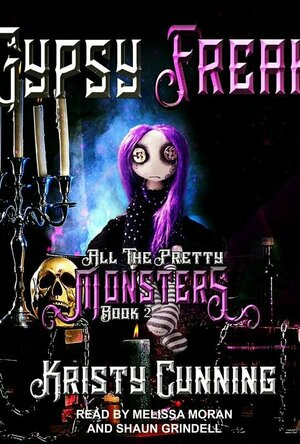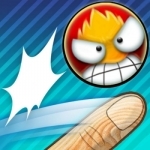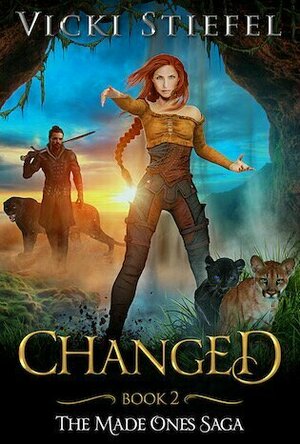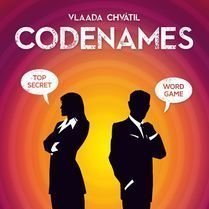
How to Play Soccer - Soccer Training Guide
Sports and Entertainment
App
*SALE* How to Play Soccer App Special Offer. 50% Off TODAY. Buy Now Before Price Goes Back Up! Now...

Gypsy Freak (All the Pretty Monsters #2)
Book
What's it like to be a monster in a town full of monsters, who don't know you're a...
Debbiereadsbook (1617 KP) rated Changed (The Made Ones Saga #2) in Books
Jun 4, 2022
This is book 2 in The Made Ones Saga, and you really should read book one, Altered, before this one. It does overlap/intertwine some with this one, and you need to hear from Kit at points along the way where it does.
Bree is Kit's sister. She has awakened on Eleutia, and finds herself at Catamount. Gato is Alpha Cat. These two butt heads a lot here, especially in the beginning but Gato soon becomes wise to Bree and her antics.
We catch up with Kit and Rafe, and what their scientists have discovered, and some more information about why Eleutia is dying, and more importantly, HOW comes to light. Still can't quite see where THAT's all going though!
Gato and Bree are perfect for each other, they really are, especially as Bree bonds with the cubs, which is unheard of for a non-cat. I loved that it took time for them to come together, to fully form their friendship, before they jump into bed with each other.
Gato does something here, which wasn't ideal, but all parties were in agreement and I'm intrigued as to how Kes manages to get free, hoping we find in the next book!
We discover what has happened to the third sister, Sybi, and how she comes to be in the land of the CastOuts. And her story begins right at the end of this one.
It's been a while since I read the first book (Aug 2019) so it took me a little bit of time to catch up with who all the major players were, and what was going on, but not long, and I thoroughly enjoyed Bree and Gato's story.
Wonderful series so far, I can't wait for Sybi's book!
4 stars
*same worded review will appear elsewhere

Matt Warnock Guitar : 101 Jazz Guitar Licks
Music and Education
App
Are you looking to expand your jazz guitar vocabulary and build your jazz guitar chops but don’t...

Slotomania: Vegas Slots Casino
Games and Entertainment
App
Get the royal treatment in the #1 Social FREE Slot Game! With 160 different premium Slot Games to...

Flick Home Run !
Games and Entertainment
App
■ ■ ■ Appstore BEST of 2012 (PAID/GROSSING) ■ ■ ■ Flick your finger and make a...

FC Porto Fantasy Manager 2017 - Your football club
Games and Sports
App
FC Porto Fantasy Manager 2017 - BE THE BOSS: the new edition of the MOST ADDICTING FOOTBALL mobile...
Matthew Krueger (10051 KP) rated Codenames in Tabletop Games
Jul 17, 2020 (Updated Jul 18, 2020)
I learn about this game through the Funhaus Channel. And personality wanted to buy it after watching it. It looked easy, fun and entertaining. So when i saw it at Pax i knew i had to by it. If you dont know what Codenames is or never heard of it. Let me explain.
Codenames is a party deduction word card name for 2-8 people. It came out in 2015, designed by Vlaada Chvátil and published by Czech Games Edition.
The Objective: Two teams compete by each having a "spymaster" give one-word clues that can point to multiple words on the board. The other players on the team attempt to guess their team's words while avoiding the words of the other team.
The Gameplay:
Players split into two teams: red and blue. One player of each team is selected as the team's spymaster; the others are field operatives.
Twenty-five Codename cards, each bearing a word, are laid out in a 5×5 rectangular grid, in random order. A number of these words represent red agents, a number represent blue agents, one represents an assassin, and the others represent innocent bystanders.
The hint's word can be chosen freely, as long as it is not (and does not contain) any of the words on the code name cards still showing at that time. Code name cards are covered as guesses are made.
After a spymaster gives the hint with its word and number, their field operatives make guesses about which code name cards bear words related to the hint and point them out, one at a time. When a code name card is pointed out, the spymaster covers that card with an appropriate identity card – a blue agent card, a red agent card, an innocent bystander card, or the assassin card – as indicated on the spymasters' map of the grid. If the assassin is pointed out, the game ends immediately, with the team who identified him losing. If an agent of the other team is pointed out, the turn ends immediately, and that other team is also one agent closer to winning. If an innocent bystander is pointed out, the turn simply ends.
The game ends when all of one team's agents are identified (winning the game for that team), or when one team has identified the assassin (losing the game).
Its a fun entertaining deduction party card game and can be played over and over again without losing its charm. Its excellent board game and a must buy if you haven't bought it yet.

Juventus Fantasy Manager 2018
Games and Sports
App
JUVENTUS FANTASY MANAGER 2017-BE THE BOSS: the new edition of the MOST ADDICTING FOOTBALL mobile...

Sky Gamblers: Cold War
Games
App
THE NEXT GENERATION OF AIR COMBAT GAMING IS HERE! With an extensive single player campaign and a...

